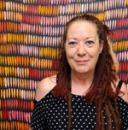Maryrose Casey is an Associate Professor with the Monash Indigenous Studies Centre (2017). Her research focuses primarily on racialised performances as a site of cross cultural communication and negotiation between communities. Within this focus, her interest is in the initiation and presentation of public performances framed as cultural representations and the ways in which those representations are read and understood and translated into the historical record and social memory through narratives of culture and race. Her interests include both practices within formal performance frames such as theatrical contexts and informal frames such as on the street. Her work bridges performance studies, cultural history and ethnography.
Associate Professor Casey has published extensively on racialized performances in Australia from settlement to the present. Her research has been recognised by a range of national and international awards, fellowships and grants.
Source: Monash University.



